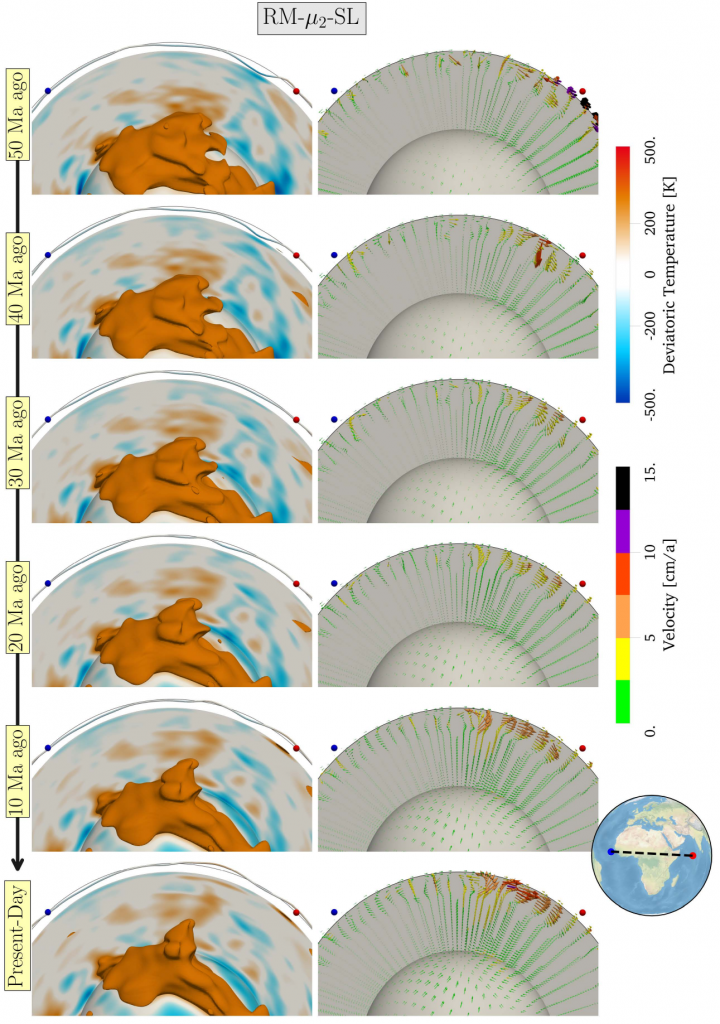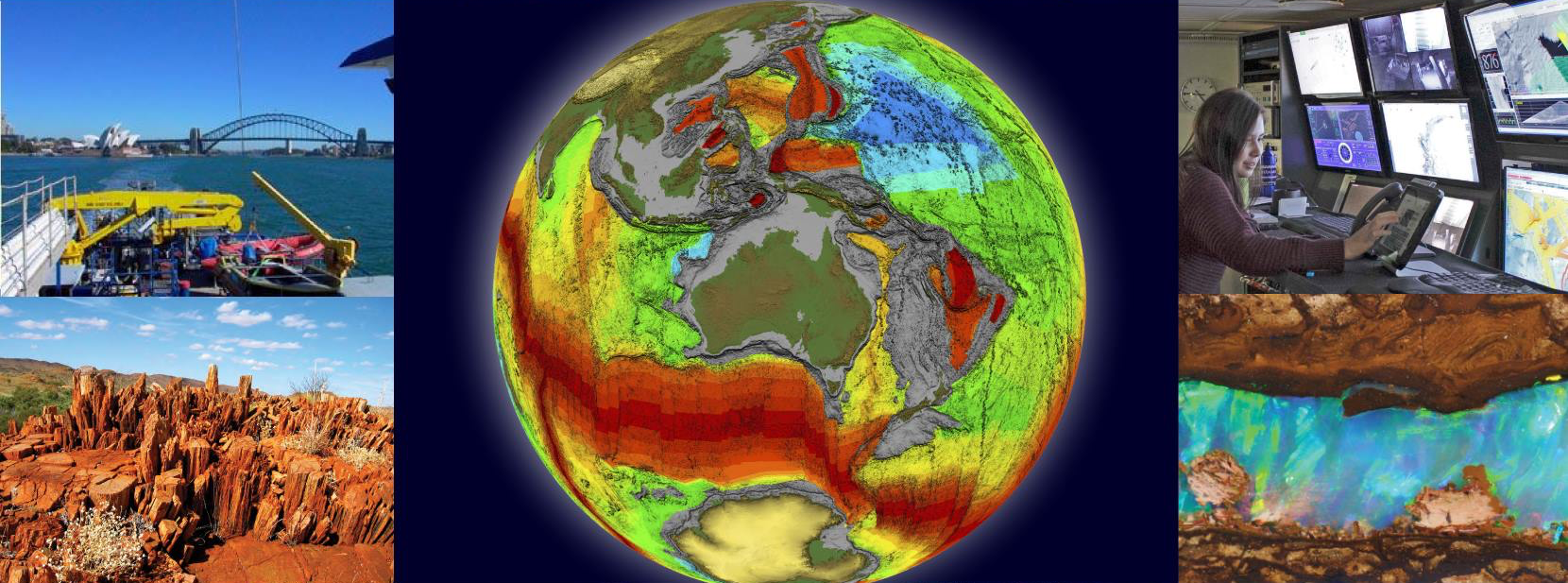Join us 11am–12pm on Wednesday 29th September for the latest instalment of the EarthByte seminar series! This week our speaker is Siavash Ghelichkhan of the Australian National University. This seminar will be held online via Zoom at https://uni-sydney.zoom.us/j/88485423493; further details are below:
Adjoint Reconstructions of the Earth’s Mantle in Space and Time
Mantle convection is the main driving mechanism for plate tectonics and associated
geological processes, such as intraplate volcanism and surface dynamic uplift and subsidence.
In theory, it is possible to model mantle flow by solving first principle conservation laws for
mass, momentum and energy. Benefiting from the rapid growth in high performance
computing capacities in recent years, such modelling attempts have seen considerable
progress in sophistication and capability. Despite these advances, the uncertainty in
rheological, thermal and chemical properties of the mantle remains large and many of the
complex features in these models involve ad-hoc parameterisations and extrapolations.
Alternatively, one can reformulate mantle flow problems as an optimisation problem, where
uncertain properties are found by minimising a misfit functional that represents the difference
between model predictions and geodynamic inferences from various disciplines, including
seismic tomography, geodesy and mineralogy. Considering the high computational cost of
this approach, one needs to obtain the derivatives of misfit functionals relative to unknown
parameters using the adjoint method.
Here I present a suite of eight, high-resolution reconstructions going back to 50 Ma for
mantle properties in space and time using the adjoint method. These models incorporate
many improvements compared to previous models, including recent advances in seismic
tomography, rheological, and thermodynamic modelling of mantle minerals. The model
predictions are found to be consistent with a range of observed Cenozoic geologic events,
opening up the possibility of exploiting the geological record to infer rheological properties
of the mantle.

![]()

